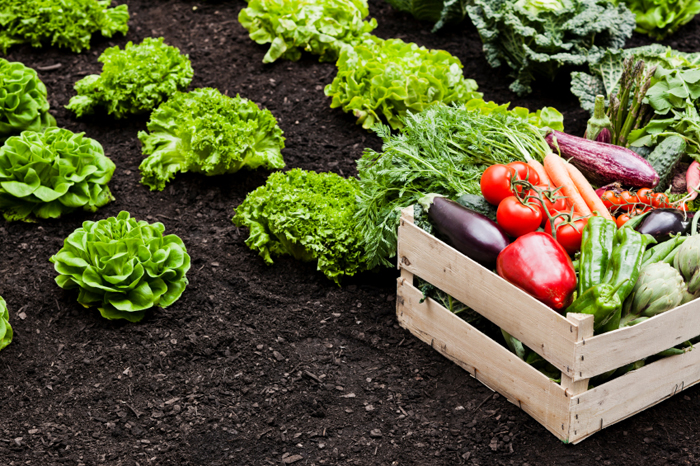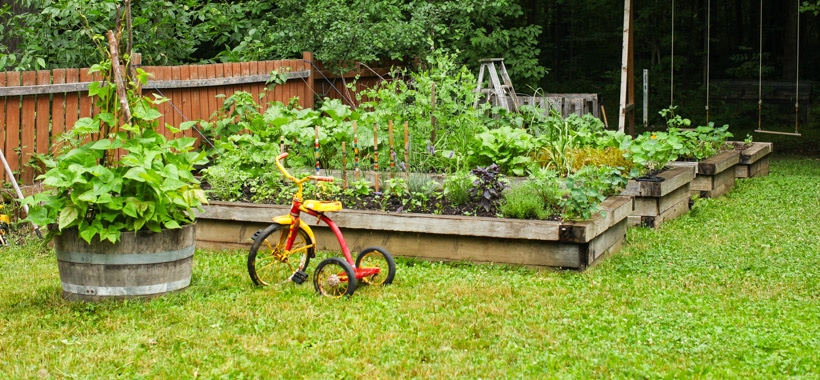Learn About the Best Practices for Homestead Gardening at Any Skill Level
Learn About the Best Practices for Homestead Gardening at Any Skill Level
Blog Article
Discover Important Tips for Successful Gardening Techniques and Practices
Gardening, usually viewed as an easy leisure activity, encompasses a variety of methods and practices that can substantially affect the outcome of your efforts. By focusing on vital elements such as dirt health, effective watering techniques, and appropriate plant choice, gardeners can create a thriving community that sustains dynamic development. Recognizing the subtleties of insect monitoring and seasonal upkeep can additionally enhance productivity. Yet, numerous fanatics forget essential details that can make or break their gardening success-- checking out these neglected facets might expose the trick to cultivating a prospering garden.
Understanding Dirt Wellness
Dirt wellness is a fundamental aspect of effective gardening, as it straight affects plant development, nutrition schedule, and ecosystem balance. Healthy and balanced dirt is identified by a rich biodiversity of microbes, raw material, and a well balanced pH level, which together develop an environment for plant development.
To comprehend dirt wellness, one have to consider its physical, chemical, and organic homes. The appearance and framework of dirt affect its ability to retain moisture and nutrients, while the chemical structure figures out the schedule of crucial components like nitrogen, phosphorus, and potassium. Routine dirt screening is essential to examine these variables, permitting garden enthusiasts to make enlightened choices pertaining to changes and fertilizers.
Furthermore, promoting organic task within the dirt is vital for preserving its wellness. Practices such as composting, plant rotation, and making use of cover plants can boost microbial variety, improve nutrient cycling, and lower soil erosion. By focusing on soil wellness, gardeners not just optimize plant development but likewise add to a sustainable environment, making certain that their horticulture methods are ecologically liable and resilient in time.
Effective Watering Methods
Ensuring that plants get the suitable quantity of water is vital for their wellness and development, especially when paired with a solid foundation of dirt wellness (Homestead Gardening). Efficient sprinkling techniques can substantially impact plant vigor, reducing water wastage and promoting optimal development
One essential method is deep watering, which urges roots to expand much deeper into the dirt, enhancing drought resistance. This technique commonly includes sprinkling less frequently but in bigger amounts, permitting wetness to pass through the root area thoroughly. Timing is also crucial; early morning is the excellent time to water, as it decreases evaporation and allows vegetation to completely dry during the day, minimizing disease threats.
Additionally, using mulch can aid keep dirt wetness and manage temperature level, further aiding effective sprinkling methods. Utilizing a drip irrigation system can likewise give targeted moisture directly to the roots, ensuring that water reaches where it's most required while conserving sources.
Checking rains and dirt moisture degrees can direct adjustments in your watering timetable, making sure plants get regular hydration without over-saturation. By embracing these effective watering strategies, gardeners can foster a flourishing atmosphere for their plants to grow.
Plant Selection and Placement
Just how can the best plant choice and critical placement transform a yard into a prospering environment? The synergy in between plant varieties and their positioning is essential for producing a vibrant yard. When choosing plants, take into consideration factors such as environment, dirt type, and sunshine exposure. Native species are commonly the best selection as they are adjusted to see page neighborhood conditions and require much less upkeep.
Strategic positioning involves setting up plants according to their growth routines and demands. Taller plants ought to be placed at the back of borders to protect against shading much shorter read this plants. Additionally, grouping plants with similar water and light needs can boost their development and reduce competition for resources.
Including a diversity of plants not just adds visual appeal however additionally promotes biodiversity, attracting useful insects and pollinators. Think about the seasonal adjustments in your garden; choose a mix of evergreens, perennials, and annuals to make certain year-round passion.
Lastly, remember to evaluate the mature size of plants before growing to stay clear of overcrowding and ensure adequate air circulation. Thoughtful plant choice and strategic placement create an unified setting, allowing your yard to grow while decreasing obstacles.
Parasite and Disease Management
Effective pest and condition management is crucial for maintaining a healthy garden ecosystem - Homestead Gardening. An aggressive strategy, integrating social, organic, and chemical strategies, can substantially decrease the effect of pests and conditions on your plants

Organic controls, such as introducing valuable pests like ladybugs or predacious mites, can maintain pest populations in check without damaging the atmosphere. In addition, keeping plant wellness through correct watering, fertilizing, and pruning will certainly bolster their resilience versus conditions.
When treatment is needed, select targeted chemical treatments, guaranteeing to adhere to application standards to minimize damage to non-target microorganisms. Always focus on sustainable practices, as they promote long-term yard wellness and ecological balance. By integrating these strategies, gardeners can effectively handle parasites and diseases, guaranteeing flourishing plants and a productive garden.

Seasonal Upkeep Practices
Throughout each period, executing targeted maintenance practices is crucial for maximizing garden health and wellness and efficiency. In spring, concentrate on dirt prep work by testing pH degrees and including essential changes. This is also the optimal time to use plant foods and mulch to maintain wetness and subdue weeds. Regularly evaluate emerging plants for bugs visit and illness.
As summer techniques, ensure sufficient irrigation while keeping track of for indications of stress and anxiety or condition. Prune back overgrown plants to urge air flow and decrease humidity around foliage. This technique not only boosts plant wellness but also advertises blooming and fruiting.
With the arrival of autumn, it's time to plan for winter season. Tidy up fallen leaves and particles to prevent pest problems, and think about growing cover crops to enrich dirt wellness. This season is also excellent for splitting perennials and growing spring-flowering bulbs.
Final Thought
Successful gardening depend upon the assimilation of sound practices in dirt wellness, watering, plant selection, pest management, and seasonal maintenance. By prioritizing dirt testing and microbial variety, employing efficient sprinkling methods, and selecting appropriate plants, garden enthusiasts can develop growing ecosystems. In addition, aggressive pest monitoring and attentive seasonal maintenance add substantially to general garden vigor. Embracing these techniques promotes a efficient and sustainable gardening atmosphere, guaranteeing flourishing growth and resilience throughout the altering seasons.
By prioritizing essential components such as dirt wellness, efficient sprinkling approaches, and suitable plant choice, gardeners can develop a successful environment that supports vibrant growth. By prioritizing dirt wellness, gardeners not just enhance plant growth but additionally contribute to a lasting ecosystem, guaranteeing that their horticulture practices are ecologically accountable and resilient over time.
Taller plants ought to be placed at the back of borders to avoid shading shorter plants. Tidy up dropped leaves and debris to avoid insect invasions, and think about growing cover plants to enrich dirt health and wellness.Effective gardening hinges on the combination of audio practices in soil health and wellness, watering, plant choice, pest monitoring, and seasonal maintenance.
Report this page